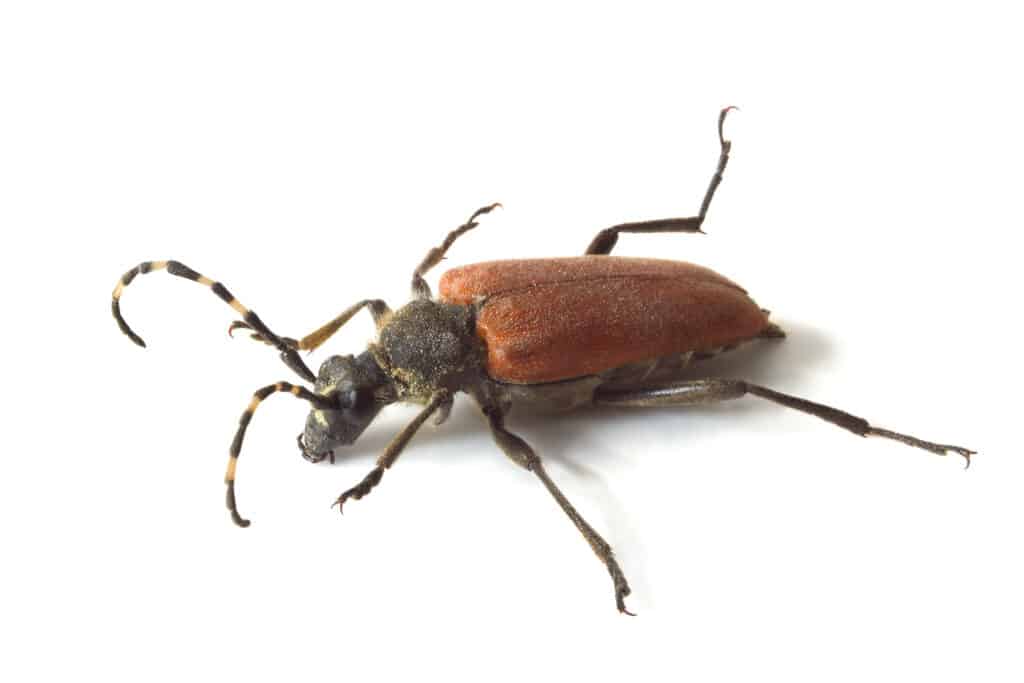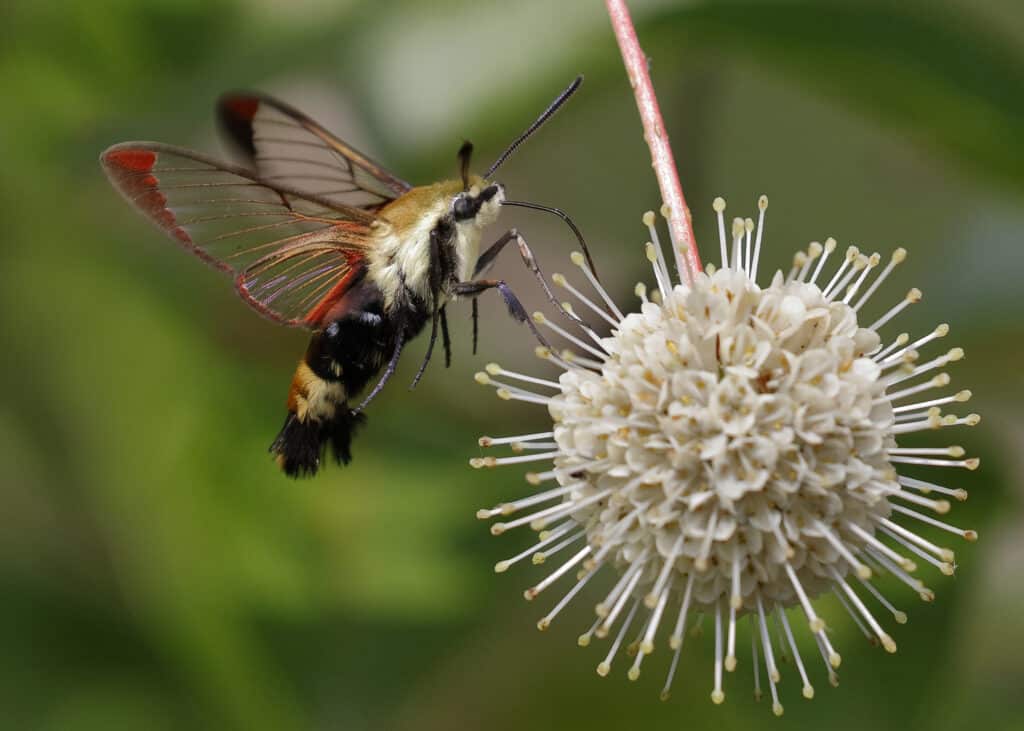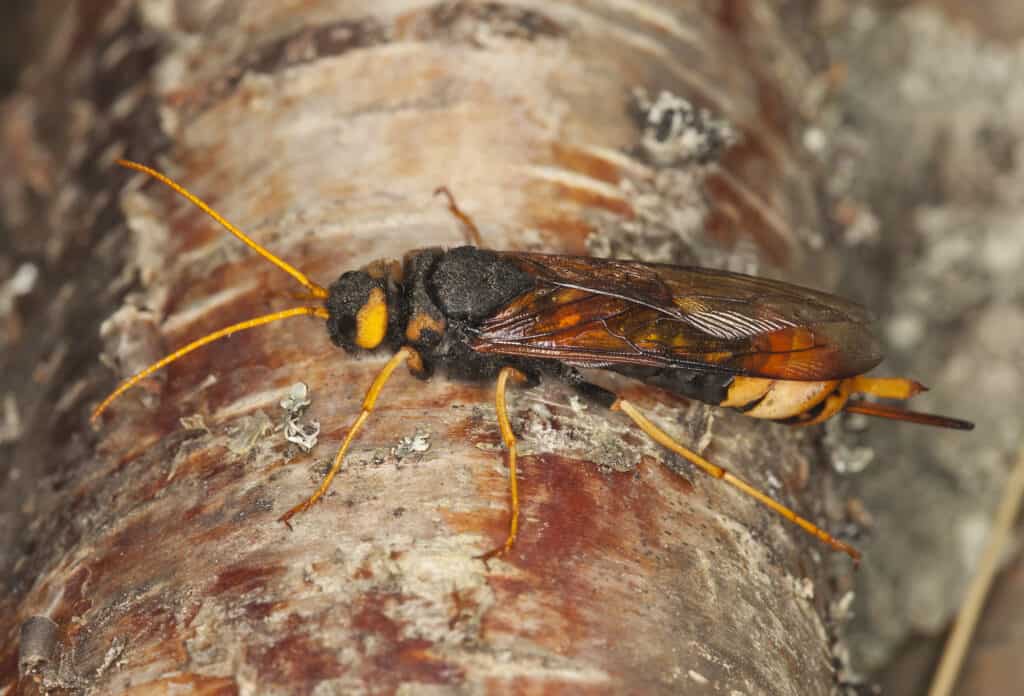People use the term “wood borers” to refer to any insect that makes holes in trees or eats furniture. However, many kinds of insects may attack your trees.
It is easy to see wood borers as pests that you must eliminate. Even so, wood borers contribute immensely to the circle of life. In wild forests, wood borers decompose dead and dying trees, joining them to the earth once more. Wood borers are particularly necessary to decompose some decay-resistant varieties of wood.
That said, wood borers may become a nuisance. They cannot differentiate forest trees from farm trees. Worse still, some species like the Asian longhorn beetle may attack even healthy trees.
This article will show you how to identify these insects and send them away.
What Are Wood Borers?
Wood borers is a general term for insects that lay their eggs within cracks, crevices, and holes in a tree, living or dead. While the term usually refers to the adult insect, the insect larva, sometimes called woodworm, perpetuates the damage.
Adult wood borers typically only lay their eggs in compromised trees. For example, diseased trees or trees recovering from damage after a storm are more likely to be attacked. Thus, wood borers are opportunistic parasites.
However, some particularly voracious breeds may attack a perfectly healthy tree.
Types of Wood Borers
Metallic Wood Borers or Flathead Borers
These wood borers have a palate for fruit trees and other woody plants. The adult metallic wood borer typically lays its eggs in June or July. After hatching, the larva stays just beneath the bark, burrowing a path for itself. This path often intersects the tree’s supply network, causing some areas of the tree to starve and wilt. Flathead borers always exit through a characteristic D-shaped hole. Examples include emerald ash borer and bronze cane borer.
The adult flathead borer has a green or brown metallic outer body, hence the name. They are only called flathead borers at the larva stage.
Longhorn Beetles or Roundhead Borers
The longhorn beetle has two antennas, almost twice the length of its body. This beetle chews a bit of the bark first, then deposits its egg therein. The resulting larva is white, with a round head and dark jaws. In the early stages, the roundhead larva stays just beneath the bark. However, as growth progresses, it will burrow deeper into the wood, causing more damage. Most roundhead species are entirely opportunistic and rarely attack hale and hearty trees. A few exceptions are the locust and polar borers that attack healthy locusts and aspen trees.

The longhorn beetle has two antennae that are almost twice the length of its body. They rarely attack healthy trees.
©iStock.com/Ohotnik
Weevils
Not all species of weevils bore into trees. The species that attack trees love shrubby plants. Adult weevils lay their eggs in the stems of plants, not the bark. A few weeks after depositing the eggs, the larva hatches and begins to bore. A weevil infestation may last up to 50 days. They can weaken a stem during this period and make an entire branch fall off.
Weevils leave behind frass or excrement that plugs up the hole they burrow.
Clearwing Borers
The clearwing borer belongs to the moth family. But unlike its siblings, it has no scales on its wings. As the name suggests, its wings are translucent and almost roach-like. The larva of the clearwing borer bears a striking resemblance to the roundhead larva. However, this larva has five pairs of prolegs marked with hooks.
Clearwing borers reside in the upper root or lower trunk. They remain at the surface, just beneath the bark. Occasionally, they may tunnel further into the trunk. These borers will likely attack a healthy tree. Examples include lilac/ash borer and peach tree borers.

The Clearwing Borer resembles a moth, except its wings are scale-less and translucent.
©iStock.com/BrianLasenby
Pyralid Borers
The larva of a pyralid borer is grayish or pinkish and is more likely to be found in larger branches and trunks than in roots. Not many species of Pyralid moths lay their eggs in trees and wood. The prominent attackers in this group are the Pinyon pitch mass borer and the Zimmerman pine borer. Both species have a propensity for pine trees, particularly Scotch and Austrian pines.
Like clearwing larva, Pyralid larva has five pairs of prolegs marked by hooks. Pyralid species leave through gummy holes covered with frass or sawdust. The sticky substance oozes out of the pith during the infestation.
Carpenterworms
Carpenterworms are much larger than the usual borers and burrow deep into trunks and barks. They also tend to stay longer in trees because they have a longer lifecycle. A carpenter worm may make its home in a tree for years. It completes its life cycle in about four years.
Caprpenterworms feed on locusts, chestnut, poplar, willow, maple, ash, and oak trees.
Horntails
Despite the pronounced spike at its rear end, the adult horntail is a non-stinging wasp. However, birds do not prey on horntails because they resemble stinging wasps. Horntails are majorly opportunistic and rarely attack healthy trees. The adult lays eggs in dead or dying trees, cuts pines, and occasionally in deciduous trees nearing the end of their lifespan.
Horntail wasps do not infest properly processed furniture. If your furniture has horntails, they were most likely present before lumbering and survived processing.

Despite the pronounced spike at its rear end, the adult horntail is a non-stinging wasp.
©iStock.com/Henrik_L
How Do I Know if a Tree Is Infested With Wood Borers?
If you suspect a wood borer infestation, don’t go looking for the crawling insect. The adult wood borer does not reside in the tree. It simply lays its eggs and buzzes away.
A tree that houses wood borers will have numerous tiny round or oval holes on its trunk or bark. These markings differentiate a wood borer attack from a woodpecker’s. A woodpecker leaves little square holes where it pecks, not round or oval ones. These signs show that a wood borer is at work:
- Tiny round or oval holes on the bark of a tree
- Areas of dead or dying bark (cankers)
- Bits of wilted leaves and droopy branches.
- Accumulation of frass or compressed wood dust.
Bark Beetles vs. Wood Borers
Bark beetles and wood borers are common pests of a compromised tree. These insects attack a weakened tree, for example, a tree affected by a fire.
While wood borers burrow into the tree, decomposing it as they go, bark beetles do not. Bark beetles can kill a tree by feeding on its phloem. Some parts of the tree will die from a lack of food supply.
Like wood borers, bark beetles also produce frass.
Managing Wood Borers
Remember that most wood borers attack a compromised tree. The first way to keep them away is to keep your tree in its top form. However, we understand that bad things happen, even to good trees. These tips should help you protect your sick tree or precious furniture.
- Use a potent insecticide, e.g., Permethrin.
- Cut off infected areas to deter burrowing.
- Seal up crevices as soon as you notice them. Blocking the holes should discourage wood borers from laying eggs in your tree or wood.
- Keep furniture dry. Wood borers prefer furniture with high moisture content.
With wood borers, a stitch in time saves nine. You can prevent a full-blown infestation in the early stages by extracting the larva with a pocket knife. This procedure is fool-proof, as long as the eggs haven’t begun to hatch.
Conclusion
Wood borers and beetles attack weakening trees and semi-processed wood. The easiest way to prevent an insect infestation is to stop adult beetles from laying eggs in your trees or furniture. You can fill up any holes or weak spots in your plants and furniture before the insects get the chance to lay their eggs in them.
Up Next
The photo featured at the top of this post is © CC BY 2.0. – License / Original
Sources
- Karen Ripley, Available here: https://www.seattle.gov/documents/Departments/SPU/10RipleyBarkBeetlesandWoodBorers.pdf&usg=AOvVaw3gQGX9JgildlGACnyOwZUw
- University of California Agriculture and Natural Resources, Available here: http://ucanr.edu/sites/postfire/files/248195.pdf&usg=AOvVaw1VxeFpC-k8TGQ9mMkyACIj
- Iowa State University, Available here: https://hortnews.extension.iastate.edu/roundheaded-borers-and-longhorned-beetles&usg=AOvVaw26Ob3FqYyw3Y4SKtcDILVm
- Entomology, Available here: https://entomology.ca.uky.edu/ent43&usg=AOvVaw0pE-D8ESpMXe1ApjxlDEQC
FAQs (Frequently Asked Questions)
How long do root borer beetles live?
The adult beetles live up to 16 months. Within this time, they may reside in the tree and feed on wood or may leave the tree entirely in search of other food sources. They return to lay their eggs.
What time of the year do woodworm beetles emerge?
Adult woodworm beetles lay eggs between April to October. The larva hatches from the eggs about 5 or 6 weeks after and begins to burrow.
Do wood-boring beetles spread?
Yes, one beetle may lay eggs in multiple locations on the same tree or other surfaces nearby.
Are beetles better than termites?
Termites are social animals, so that a termite infestation will deal faster damage. However, the damage would be similar if you had equal numbers of termites and wood borers.
Do wood borers bite humans?
Humans aren’t their ideal source of nutrition, but they may bite any human that intrudes on their space. They are also prone to causing rashes and irritations in humans.
Thank you for reading! Have some feedback for us? Contact the AZ Animals editorial team.







